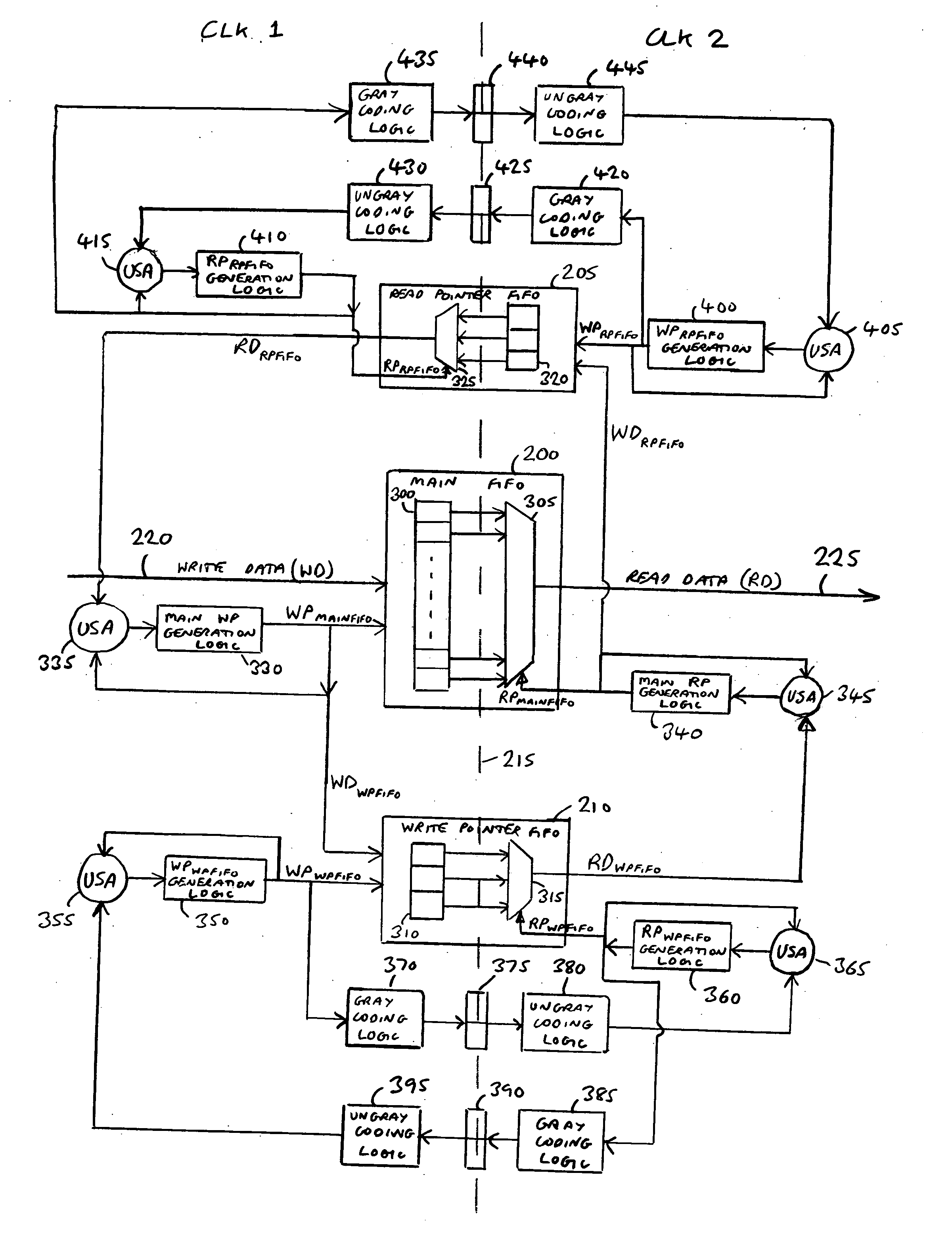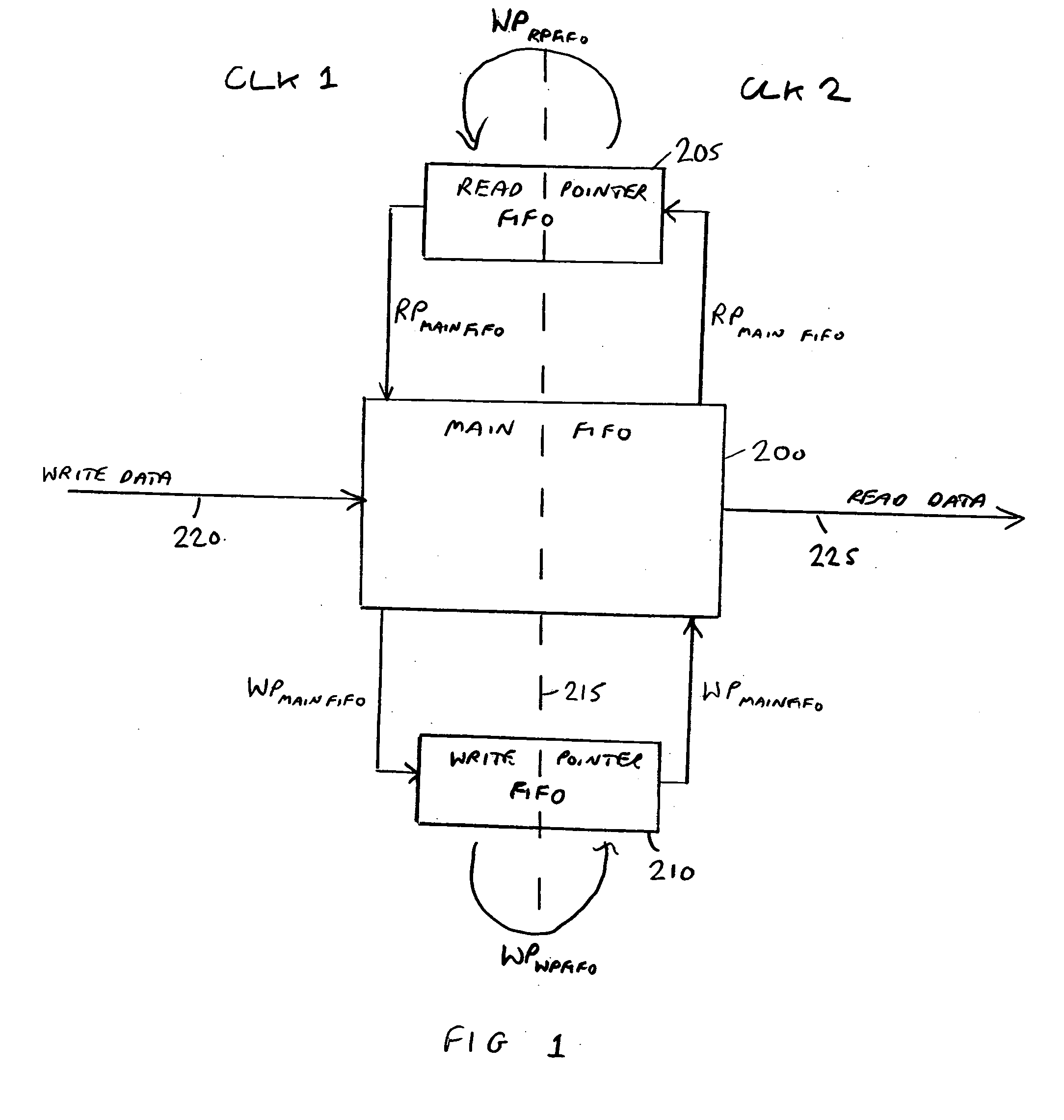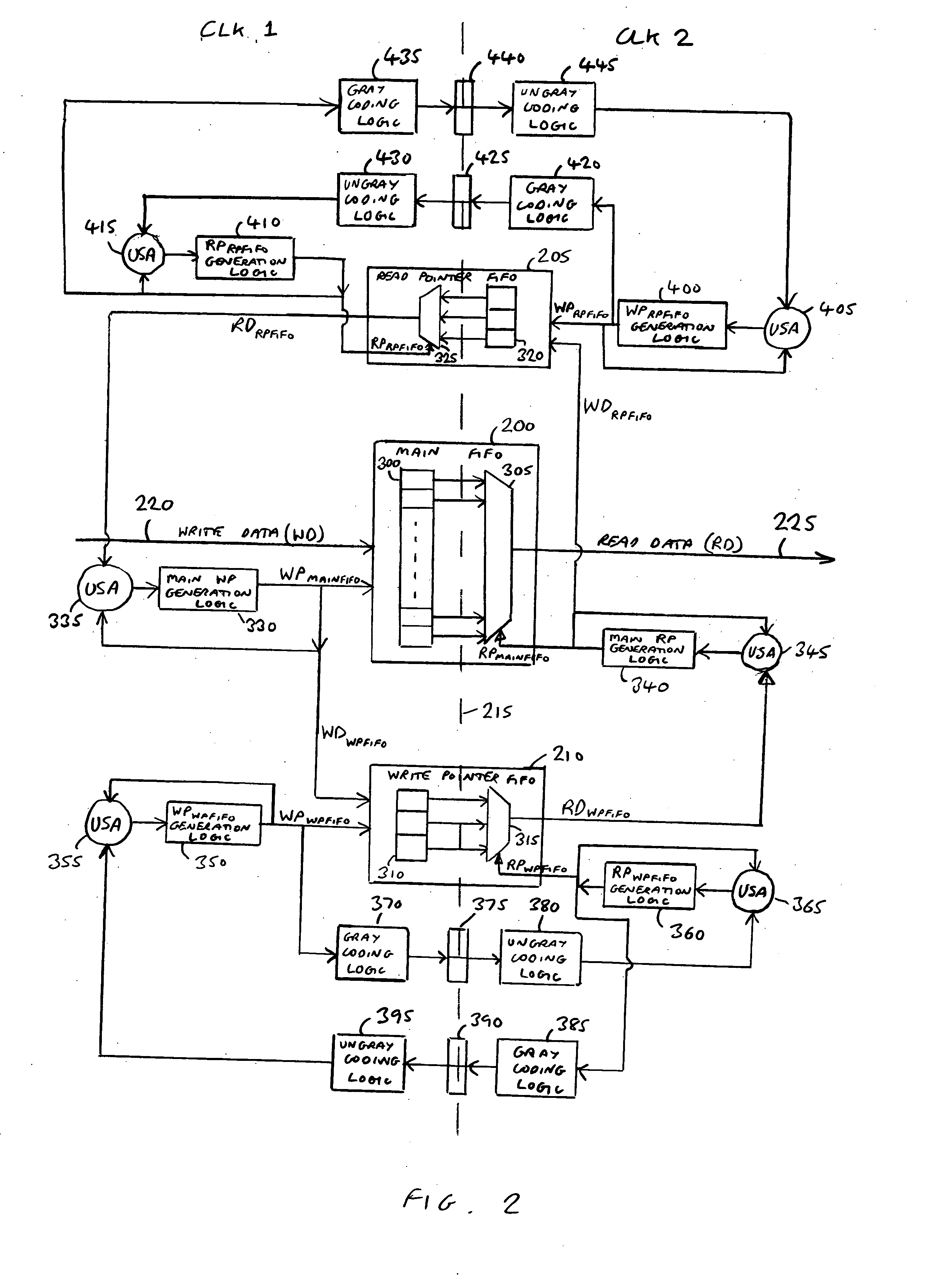Asynchronous FIFO apparatus and method for passing data between a first clock domain and a second clock domain of a data processing apparatus
- Summary
- Abstract
- Description
- Claims
- Application Information
AI Technical Summary
Benefits of technology
Problems solved by technology
Method used
Image
Examples
Embodiment Construction
[0032]FIG. 1 illustrates an asynchronous FIFO apparatus in accordance with one embodiment of the present invention. This asynchronous FIFO apparatus includes a main FIFO 200 for storing data written into the main FIFO over path 220, and from which data can subsequently be read over path 225. Data is written into the main FIFO 200 in the first clock domain (CLK1) and data is read from the main FIFO 200 in the second clock domain (CLK2), the dotted line 215 in FIG. 1 schematically illustrating the demarcation between the first and second clock domains.
[0033] Data stored into the main FIFO 200 over path 220 is stored at locations within the FIFO indicated by a write pointer WPMAINFIFO. As data is written into a location specified by a particular WPMAINFIFO value, then that WPMAINFIFO value is written into the write pointer FIFO 210 at a location indicated by a write pointer for that write pointer FIFO, this write pointer being referred to hereafter as WPWPFIFO. This WPWPFIFO value is ...
PUM
 Login to View More
Login to View More Abstract
Description
Claims
Application Information
 Login to View More
Login to View More - R&D
- Intellectual Property
- Life Sciences
- Materials
- Tech Scout
- Unparalleled Data Quality
- Higher Quality Content
- 60% Fewer Hallucinations
Browse by: Latest US Patents, China's latest patents, Technical Efficacy Thesaurus, Application Domain, Technology Topic, Popular Technical Reports.
© 2025 PatSnap. All rights reserved.Legal|Privacy policy|Modern Slavery Act Transparency Statement|Sitemap|About US| Contact US: help@patsnap.com



